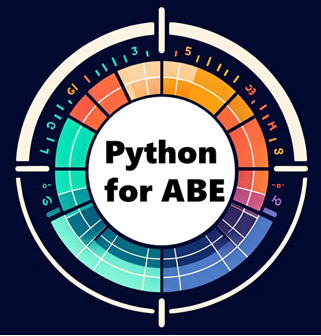For loop#
Overview#
The for loop performs the iteration over a sequence (e.g., string, list, tuple, or range) and executes a block of code for each element in the sequence.
General syntax
for element in sequence:
# block of code to be executed for each element
Examples#
# Example 2
for num in range(1, 5):
print(num)
1
2
3
4
# Example 3
for x in 'Python':
print(x)
P
y
t
h
o
n
With these simple examples, you can extrapolate for more complex interactions, such as looping over a list of image paths and open one image each time
List Comprehensions#
List comprehension is a concise way to create new lists based on existing lists or other iterable objects.
General syntax
Note
new_list = [expression for item in iterable if condition]
expression: The expression that defines the elements of the new listitem: Each item in the iterable objectiterable: iterable object (list, tuple, string, or range, etc)condition(optional): An optional condition that filters the items from the iterable. Only items that satisfy the condition are included in the new list.
# Example of list comprehension
# From
squares = []
for x in range(1, 11):
squares.append(x**2)
# TO
squares = [x**2 for x in range(1, 11)]
Loop Without Accessing Items#
It is not mandatory to use items of a sequence within a for loop.
sequence = ['land', 'air', 'water']
for element in sequence:
print('Nothing change')
Nothing change
Nothing change
Nothing change


